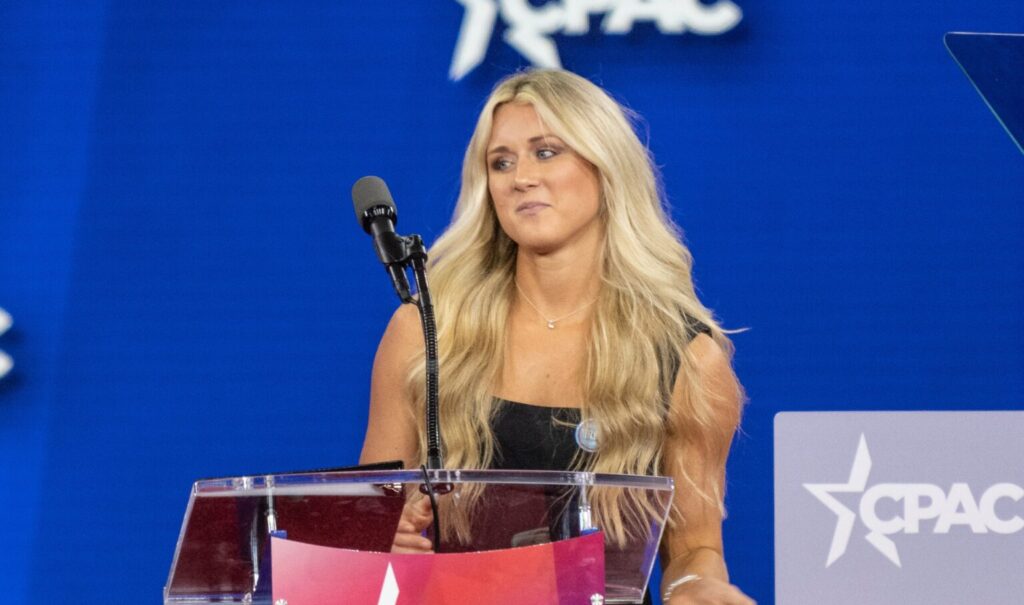This is the real cost of DEI in colleges
April 10, 2023
So just how much money are we all spending on Diversity, Equity and Inclusion – or DEI – in colleges? That diversity that has a howling mob threaten, shout down and even physically strike Riley Gaines as she gives a talk on campus?
Or as AIM has asked, how many women do we need to attack to advance feminism?
And why are we paying for this?
The answer is too much, as physical violence toward women is never acceptable. But we are paying for it more each year.
The real reason for the rising cost of college is that the administration is swallowing ever more of the money. The number of professors on campus trends downward even as college costs rise. It’s the paper-shufflers eating the extra money. The DEI offices are one of the fastest-growing segments of those rising costs.
At the University of Florida, $5.3 million is spent on diversity programs. The average college has 41 people on its diversity team. That’s actually 4 times the number working on getting disabled students their legal rights in reasonable accommodations. That’s also 3.4 diversity staff (not including actual diversity problems like disability and so on) for every 100 tenured or tenure track staff.
It’s even possible that the diversity costs reduce diversity on campus. The higher college costs from having to pay all these people mean that fewer poorer – the more diverse of course – can afford to go to college. These costs are not small. Back in 2009, the University of California at Berkeley was paying the diversity chief $194,000 and the University of Virginia its equivalent $395,000.
Even the reported costs are an understatement. At the University of Wisconsin, the true cost is more like $40 million than the reported $25 million. And that 40 is around $1,000 per student per year. Who, other than the bureaucrats clearing their paychecks, thinks that’s worth it?
The University of Michigan employs 163 people on their DEI “work” (a full report here). That’s why the head of that work gets $431,000 a year – more staff means more importance to a manager. University of California at Davis was spending $2.2 million a year just on DEI staff costs back in 2017.
As to what the San Francisco State University DEI office actually does, it claims “The goal of this office is to promote a campus climate that is inclusive and welcoming for all…”
As Riley Gaines just found out. Although San Francisco State University does add the word “students” to that we tend to feel that seeing a woman shouted down and assaulted might not make other women on campus feel quite so included and welcomed. But on the plus side, they do get 1 out of 1 on a survey of how diverse they are. This shows that what they’re doing – being diverse, welcoming and all that – isn’t what we normally think those words mean. A perfect score for a college campus that not only allows a woman to be attacked but allows that because her views are not universally held?
Or again from San Francisco State: “we prioritize diversity, equity and inclusion in our classrooms and workplace “ but apparently not the physical safety of invited visitors nor any diversity of thought or opinion.
As it happens, San Francisco State must reduce expenditure by $36 million over five years. Abolishing the DEI bureaucracy would cover that nicely. Guess what isn’t even up for discussion, even as reducing the teaching staff is already penciled in?
For an example of what the money goes on at SFSU: “JEDI PIE – The Justice, Equity, Diversity and Inclusion Pedagogies for Inclusive Excellence (PIE) Institute builds a community of JEDI protagonists by developing anti-racist pedagogy and dismantling white supremacy in online teaching.” No, we are not kidding, we wish we were. More of this here.
There are many problems with the mere idea of diversity, equity and inclusion policies, practices and offices. They’re significant portions of college budgets these days, and one of the reasons why college costs continue to rise. And the one thing they don’t do is promote diversity, equity, or inclusion in the only way that an intellectual environment should, in intellectual beliefs. That is the purpose of college, to go and think, the DEI offices and practices are expressly designed to stop people from thinking and to hew ever closer to the one politically approved line.
As Riley Gaines shows. By arriving on campus to express a view alternative to that meant by modern diversity she is shouted down and assaulted. Even if DEI were free that would still be too expensive.
Or, to say it again, as AIM’s Adam Guillette has asked “How many women do we need to attack to advance feminism?”
One is too many.
